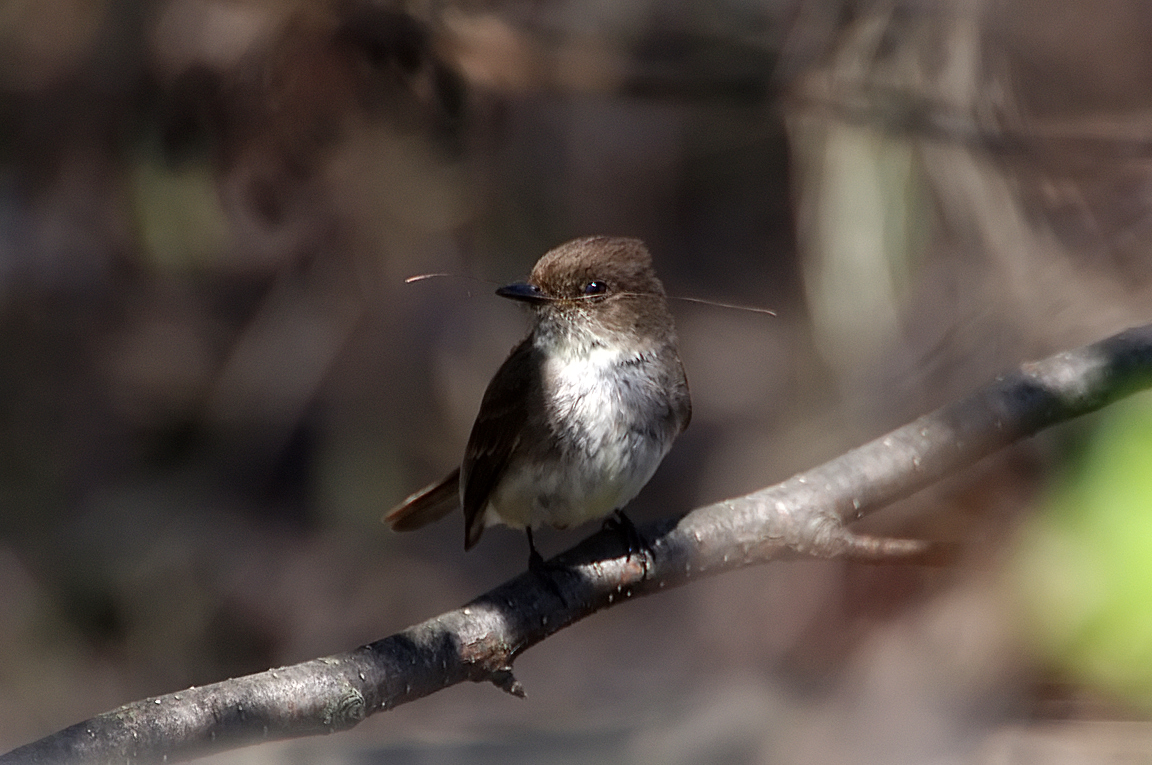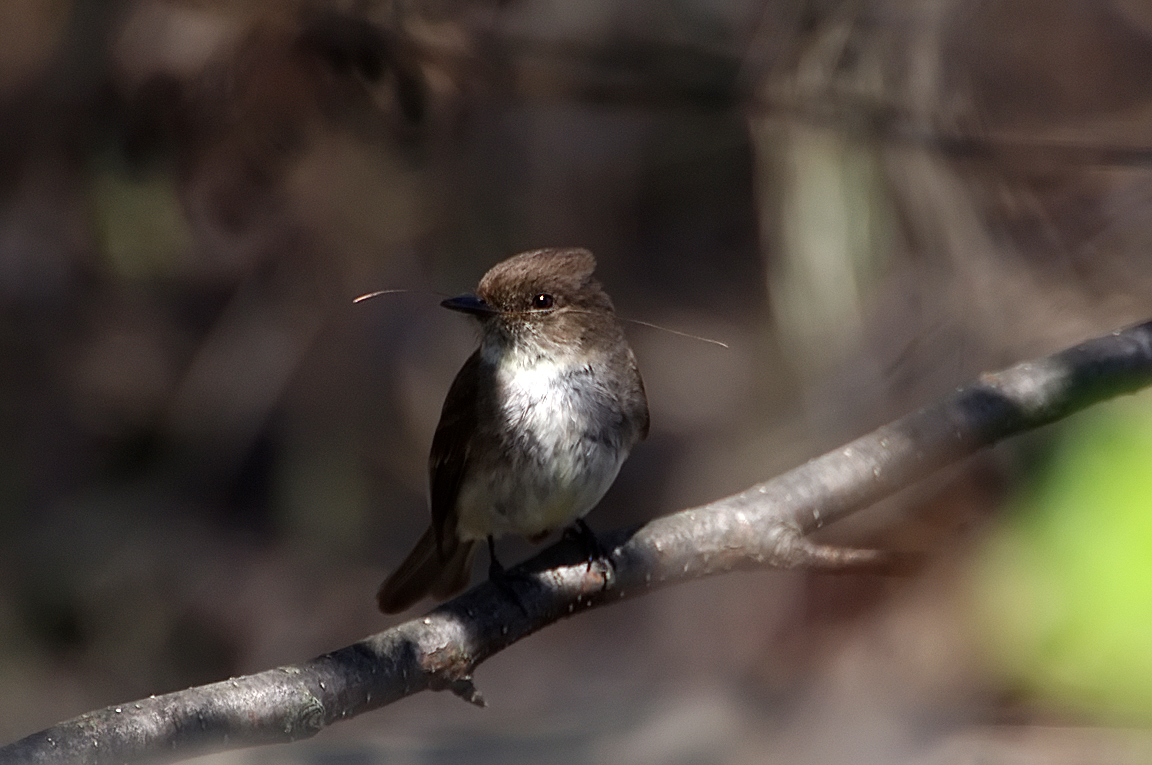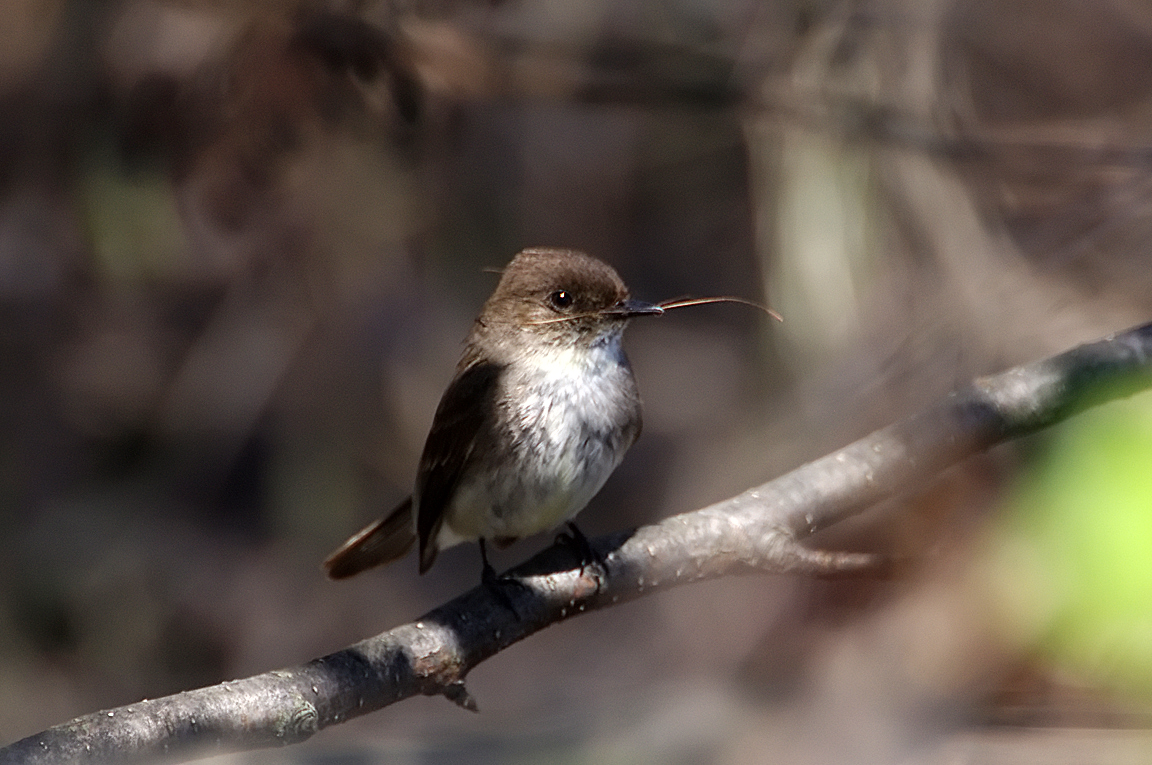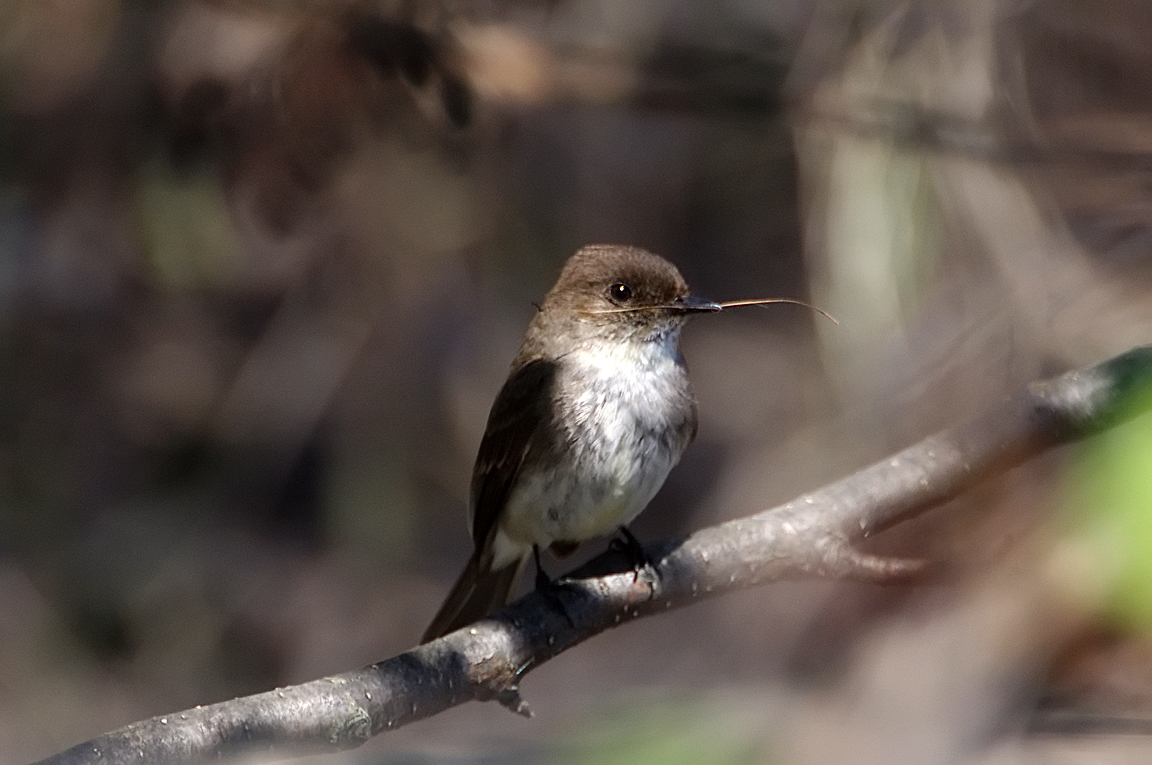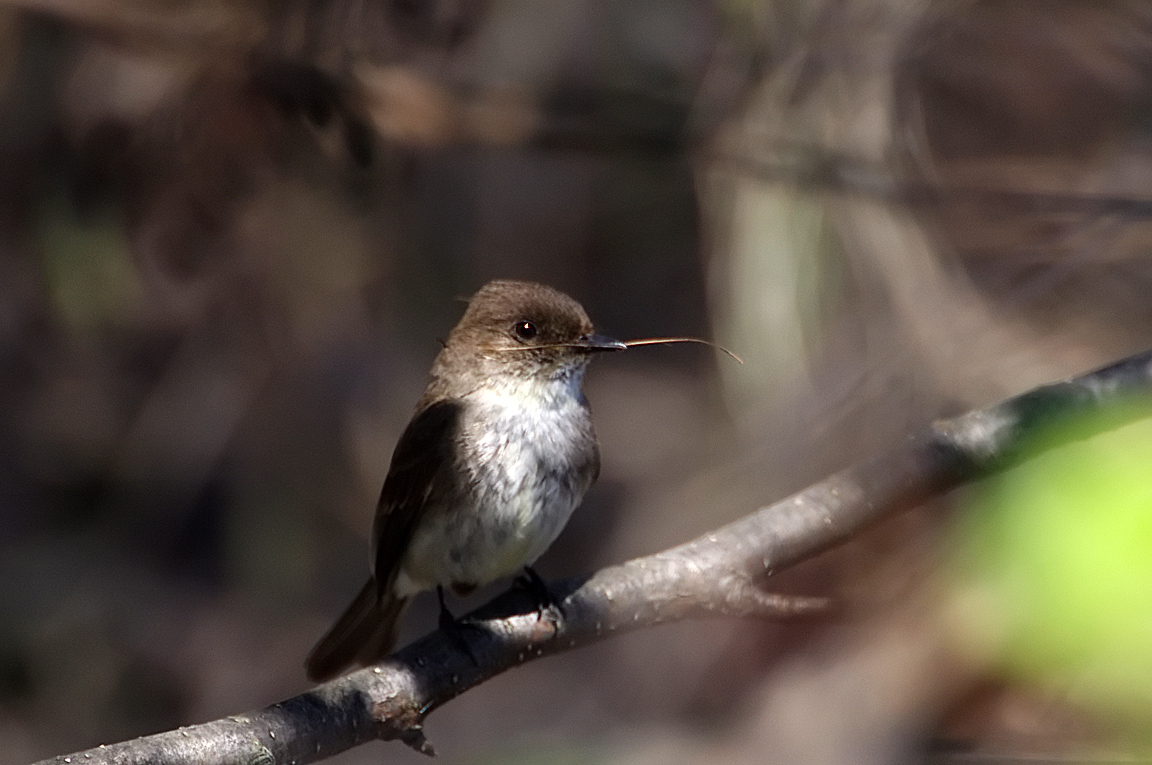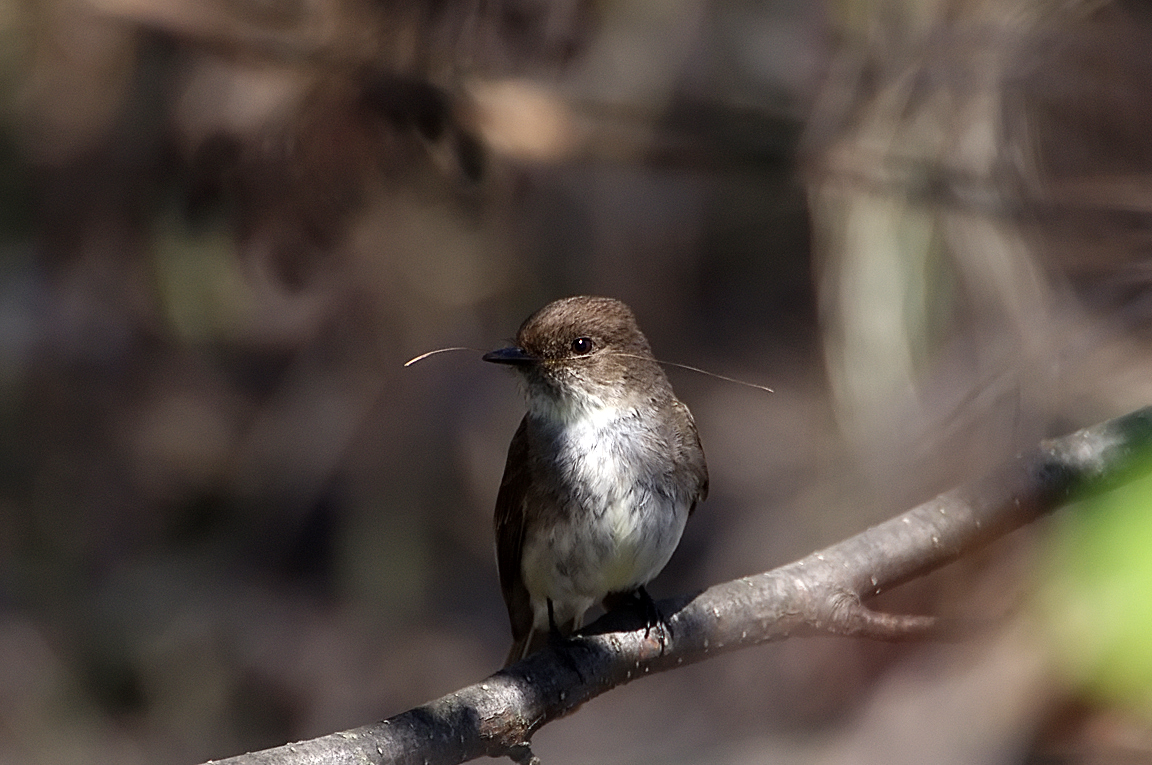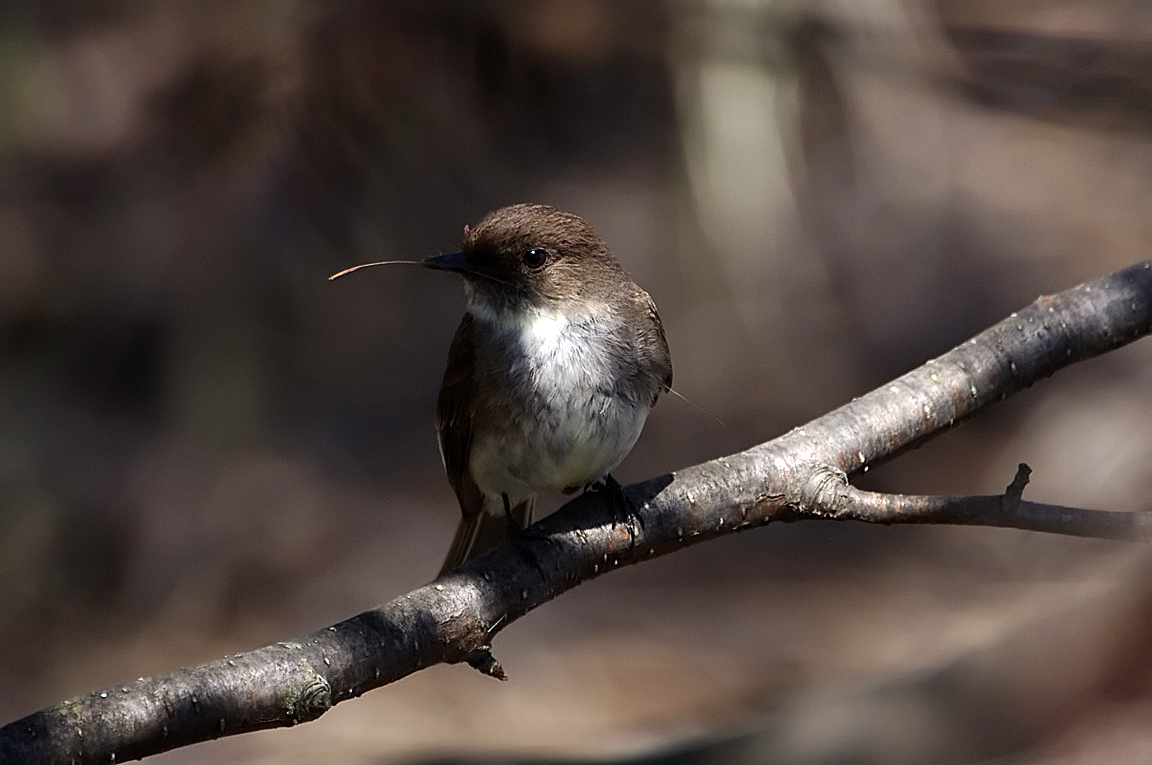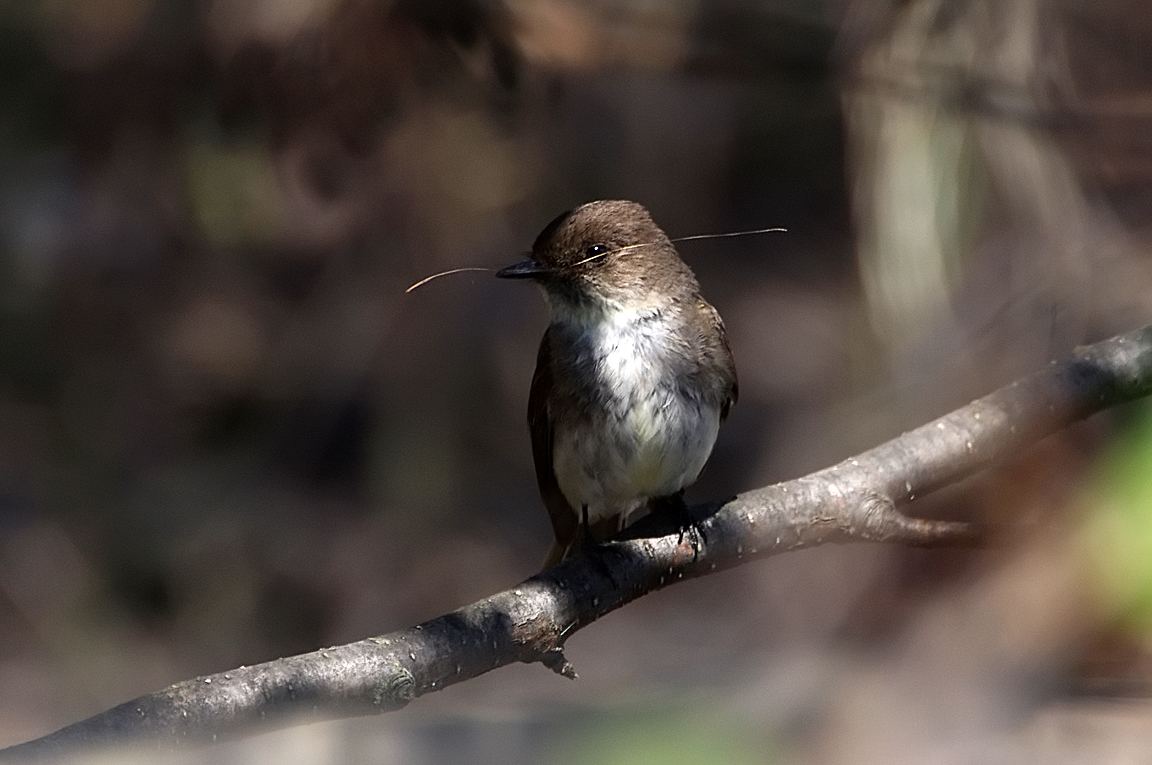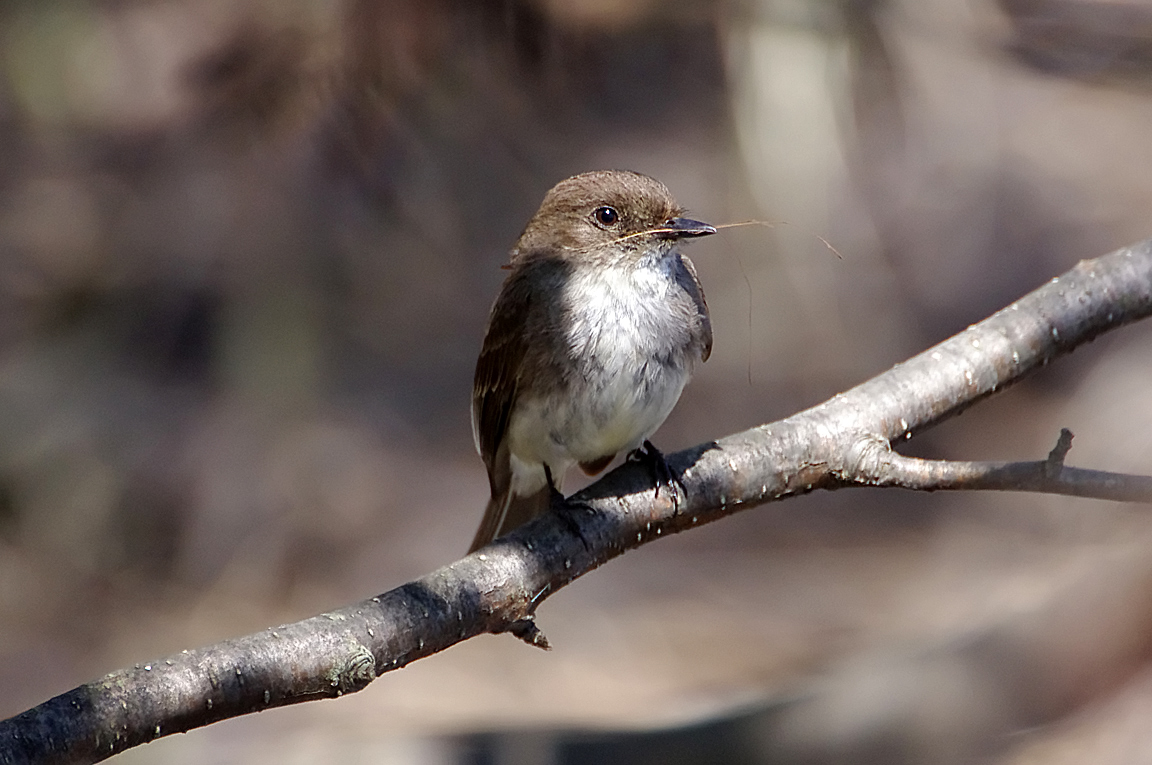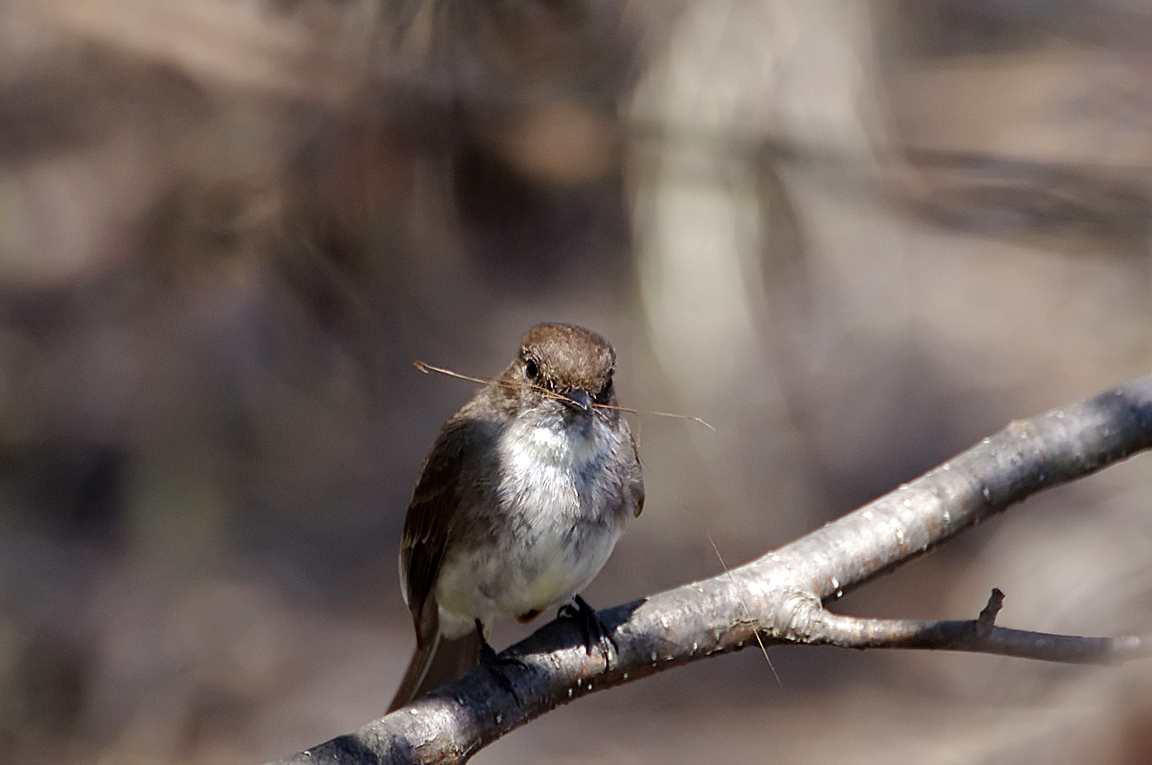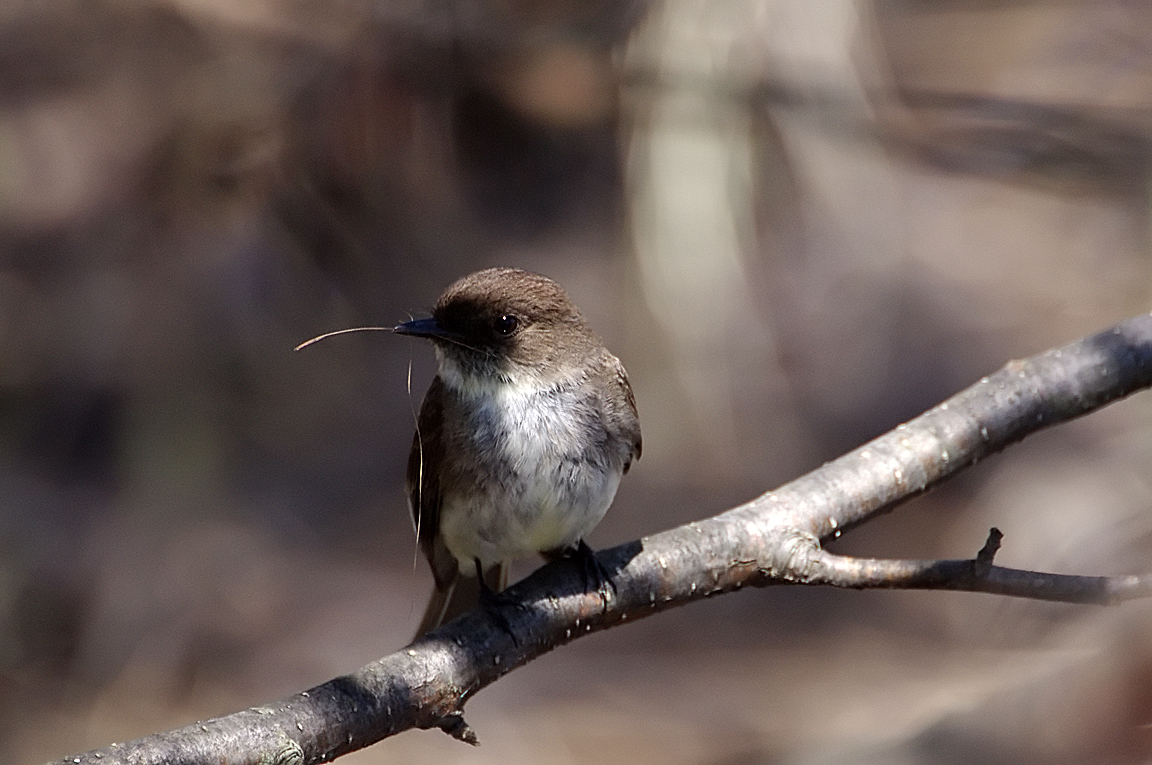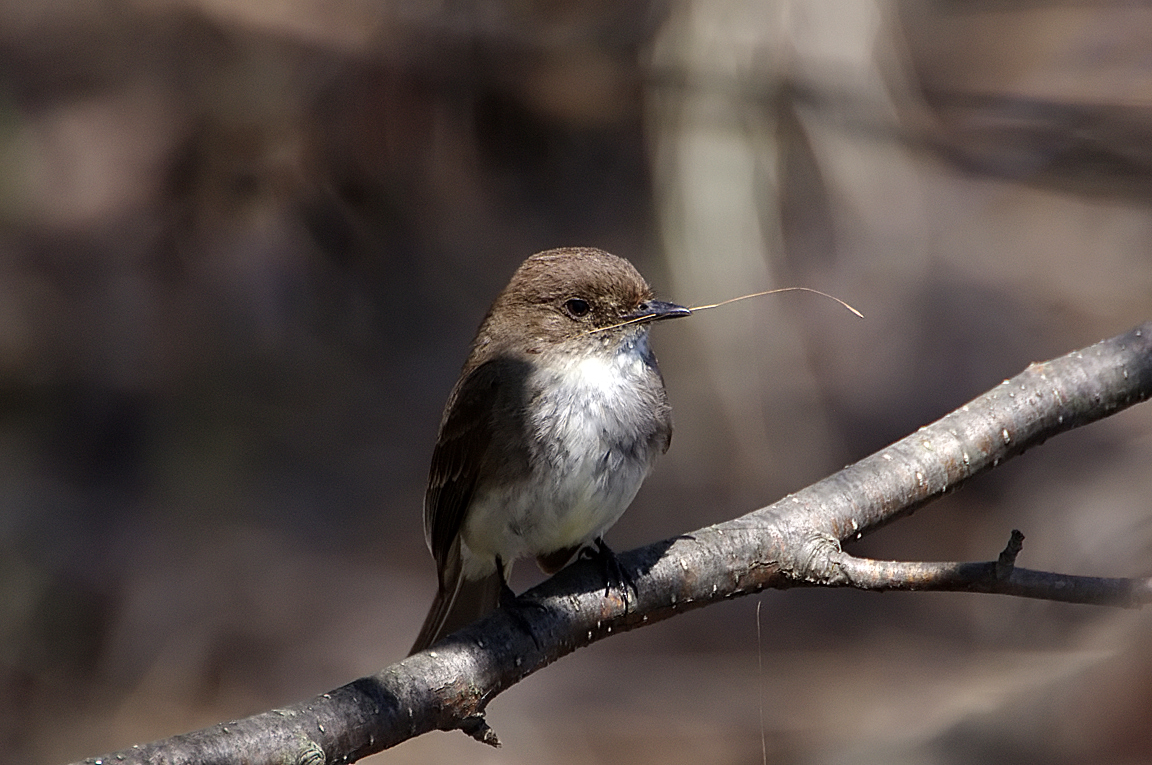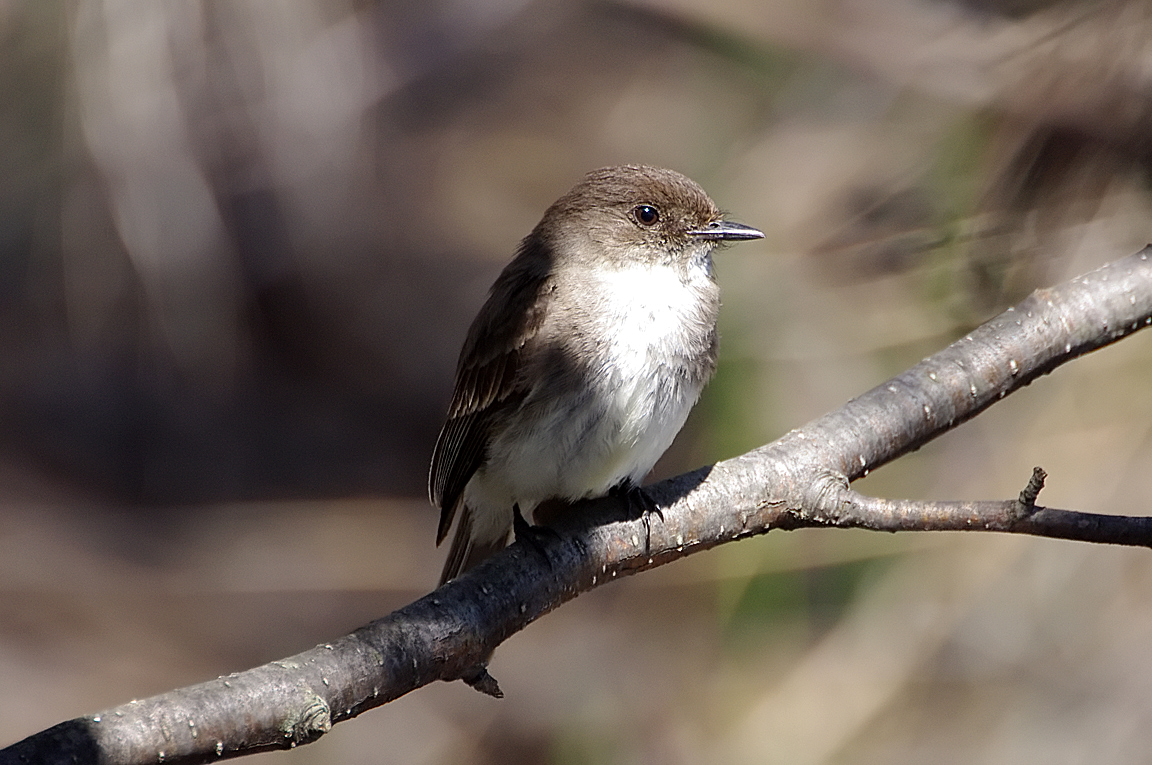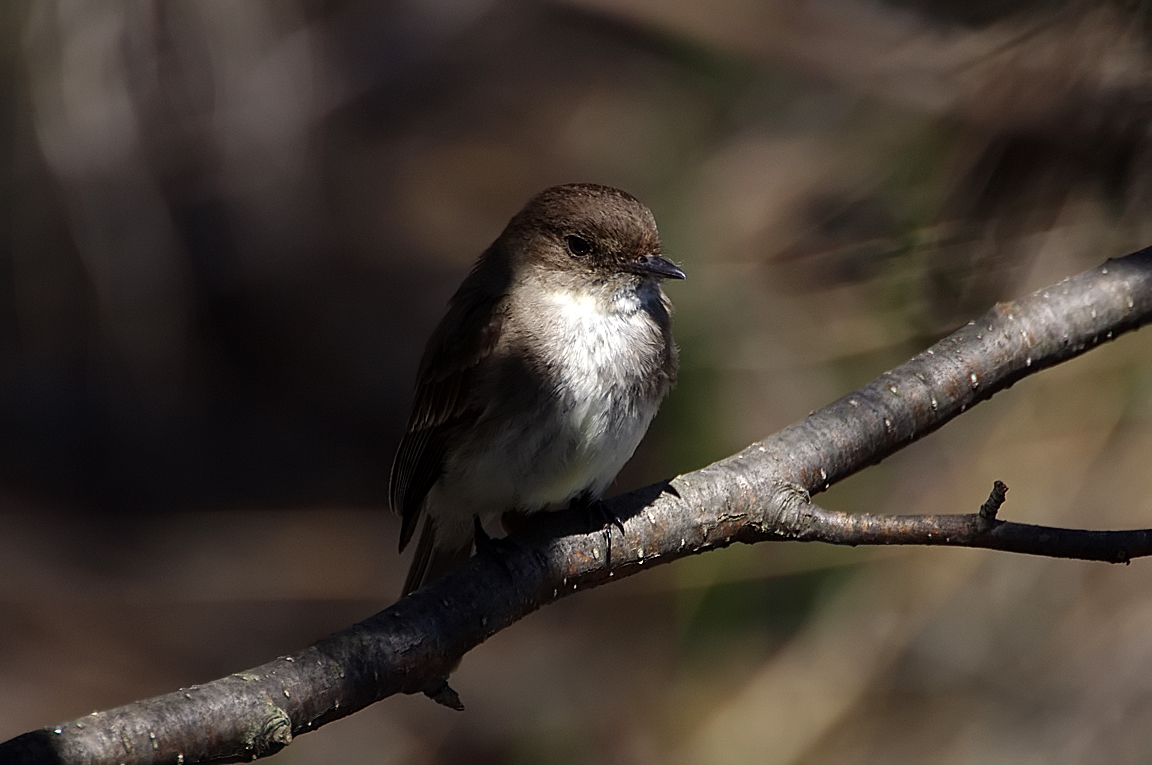|
|
|
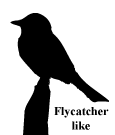 |
Eastern Phoebe
|
| Sayornis phoebe | |
Perhaps the most familiar flycatcher in eastern North America, the Eastern Phoebe nests near people on buildings and bridges. It can be recognized by its emphatic "phee-bee" call and its habit of constantly wagging it tail.
Interesting Information
-
In 1804, the Eastern Phoebe became the first banded bird in North America. John James Audubon attached silvered thread to an Eastern Phoebe's leg to track its return in successive years.
-
The Eastern Phoebe is a loner, rarely coming in contact with other phoebes. Even members of a mated pair do not spend much time together. They may roost together a bit early in pair formation, but even during egg laying the female frequently chases the male away from her.
-
The use of buildings and bridges for nest sites has allowed the Eastern Phoebe to tolerate the landscape changes made by humans and even expand its range. However, it still uses natural nest sites when they are available.
Description
Adult Description
-
Length Range: 18 cm (7 in)
-
Weight: 20 g (0.7 oz)
Small songbird.
Dark grayish brown back and head.
Lighter underparts.
No eyering or conspicuous wingbars.
Wags tail.
Sex Differences
Sexes Similar
Immature
Immature like adult, but with more yellow on belly and noticeable faint wingbars.
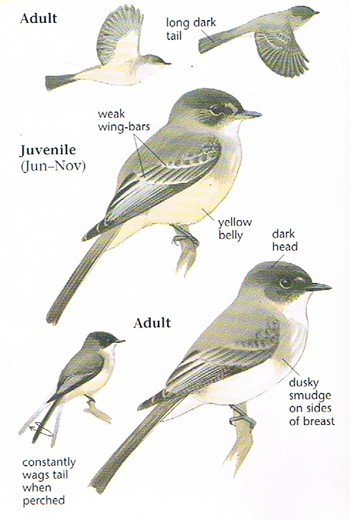
Photo taken from: The Sibley Field Guide by David Allen Sibley
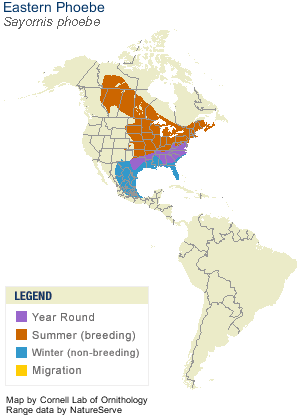
© 2003 Cornell Lab of Ornithology
|
Habitat |
|
Found in woodlands and along forest edges, often near water. |
|
Behavior |
|
Flies from perch near ground and pursues flying insects. Also hovers and gleans insects from substrate. |
|
Food |
|
Flying insects. Occasional small fruits. |
Taxonomy
| Kingdom: | Animalia |
| Phylum: | Chordata |
| Subphylum: | Vertebrata |
| Class: | Aves |
| Order: | Passeriformes |
| Family: | Tyrannidae |
| Genus: | Sayornis |
| Species: | Sayornis phoebe |
Similar Species |
|
|
Bird Sound |
|
Song is two rough, whistled notes, "fee-bee" with the second note rasping or with a stuttered, more whistly second note "fee-b-be-bee." Call note a clear chip. |
|
Eggs look like this |
|
Photo taken from: ARCTOS Collaborative Collection Management Solution |
